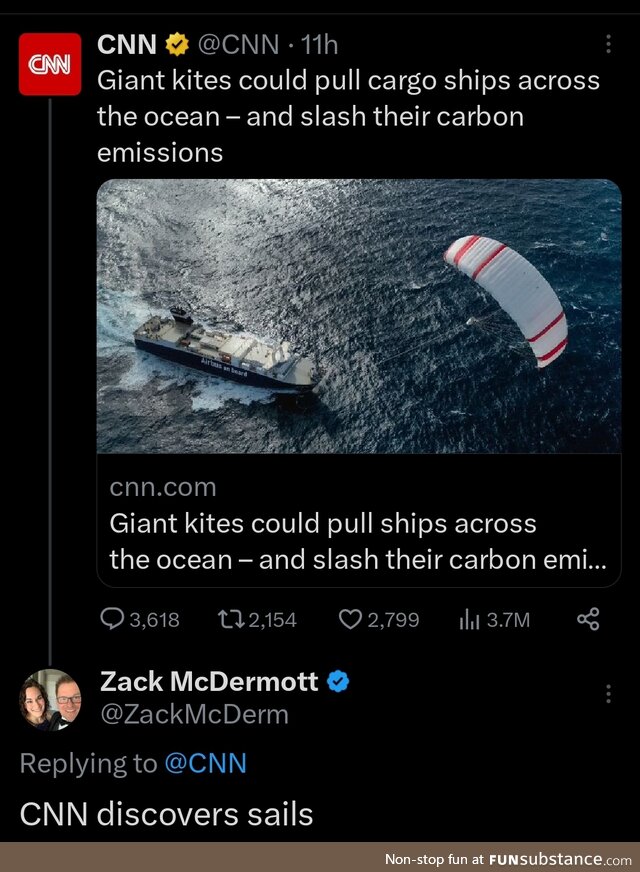Featured Posts

I wish I had a fort

The powerof positive thinking

NASA

Pray for Australia

Take care of each other

She has emerged

My soul feels so much better

I just ordered one. #Just2019HispanicThings

He really wanted his photo at the Halloween party, but was super scared of the spiders

The Only Thing More Contagious Than COVID19 Might Be This Fox's Smile
About
FAQ
Contact
Rules
Terms
Privacy
Feedback
Keyboard Shortcuts:
Previous Post · Next Post · + CTRL Skip Post
Previous Post · Next Post · + CTRL Skip Post
© 2025 FunSubstance · funny and entertaining pictures, memes, gifs & videos.



“Cargo” ship. Modern cargo ships tend to maximize on deck and under deck storage while attempting to maximize the speed a vessel can load and unload cargo. What gets in the way and takes valuable space such as for containers or hatches to the hold etc? Giant pillars on the deck and obstructing crane or overhead access for machines to speed loading and unloading.
Problem 2? You could be forgiven for not being a structural or nautical engineer, but modern ships aren’t designed for sails. Their structures aren’t designed to support the weight or stresses and their ballast/keel, etc. are not made for them. You’d generally need massive overhauls to most modern cargo ships to fit sails safely and properly.
The kite Can fairly easily and speedily be retracted and stowed and shouldn’t interfere with general operation like loading and unloading. It is generally cheaper and generally fairly easy to retrofit to existing ship designs, especially compared to sails.
A kite Can generally fly much higher than it is practical to raise sails on a mast or without the trade offs of a sail with a mast high enough to reach the same distances above the deck. This can give the kite access to more plentiful or powerful winds at different altitudes. You may have noticed that there are “surfboards” that have sails on them as well as “surfboards” pulled by a kite or “parachute.” You Can look up differences in the sports if you aren’t aware but it’s basically the same as above. Kites tend to be faster, easier/faster to learn, lighter,
On a cargo ship the kite also would not be means to provide full time or primary power, it would be intended for use to reduce fuel consumption by offering assist as able. Theory and then testing has indicated that the relatively low costs and complications of the kite can provide a new increase to profit through decreased fuel costs whereas sails as we know them and as modern cargo ships tend to run will generally create a net loss for the foreseeable future.